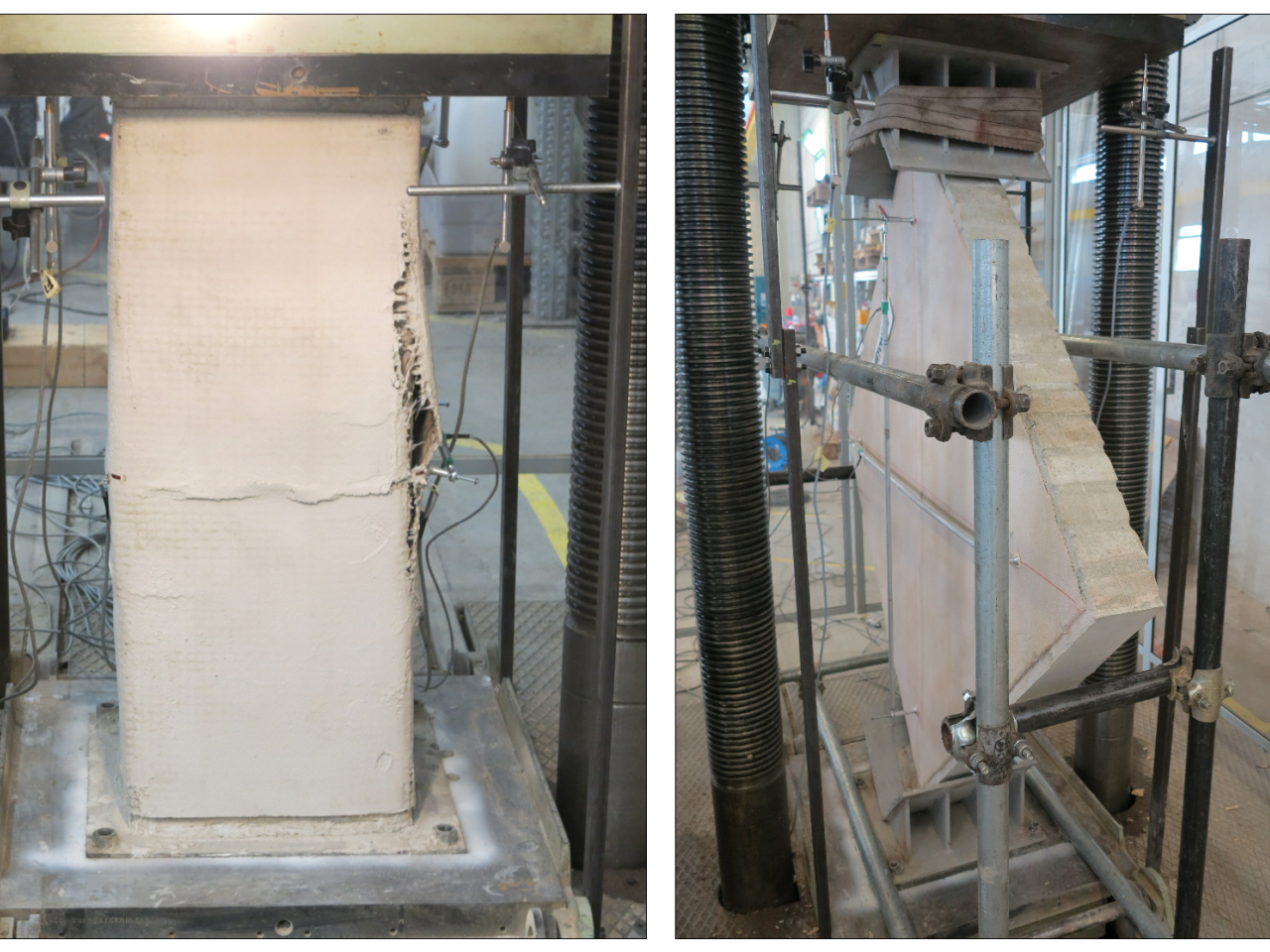The more recent seismic events have highligthed the seismic vulnerability of Italian masonry structures. Thus, it has become more and more important to adequately design and apply efficient strengthening interventions on masonry buildings. Among the innovative techniques for seismic retrofitting, the use of fiber reinforced composite materials, such as FRP (Fiber Reinforced Polymers) and FRCM (Fiber Reinforced Cementitious Matrix) is discussed and analyzed. The service realized by the CIRI-EC (Centre for Applied Research for Buildings and Constructions) is aimed at evaluating the efficiency
FRCM: good fire resistance, physical and chemical compatibility with the masonry substrate, permeability, transpirability, reversibility of the interventions, sustainability, lower cost with respect to FRP.
Private and public masonry buildings
 Tests on a mansory column and a mansory panel, reinforced with FRCM
Tests on a mansory column and a mansory panel, reinforced with FRCM
Experimental campaign ARDEA on the use of fiber reinforced composite materials (FRP and FRCM) for the seismic retrofitting of masonry columns and panels.
The offered service allows to realization of masonry samples, columns and panels, are built and reinforced in the structural laboratory of the CIRI-EC.
The masonry columns are reinforced by using:
- Unidirectional carbon fibers (Carbon-FRP);
- Bidirectional carbon fiber grids (Carbon-FRCM) or bidirectional glass fiber grids (Glass-FRCM);
The masonry panels are reinforced using the following reinforcement typologies:
- Unidirectional carbon fibers (Carbon-FRP);
- Bidirectional carbon fiber grids (Carbon-FRCM) or bidirectional glass fiber grids (Glass-FRCM);
The reinforced masonry columns are then subjected to uniaxial compression tests while the reinforced masonry panels are subjected to diagonal compression tests.
During the tests, the deformations of the samples are measured by means of LVDT, potentiometers, strain gauges and the Digital Image Correlation (D.I.C.) The D.I.C. is an innovative optic method which allows the measurement of the deformations on the surface of the samples by comparing the sequence of pictures recorded during the test with a reference picture.
The results are then processed in order to evaluate the increments in terms of load-bearing capacity and ductility given by the reinforcements and evaluate the efficiency of different strengthening interventions on masonry columns and panels.
ARDEA Progetti e Sistemi S.r.l.
SIKA
During the research, which still proceeds, is expected to characterize reinforcements through other experimental tests and evaluation of their efficiency in applications on pillars and masonry panels both in the laboratory and in situ. Enterprises: SIKA, ARDEA Progetti e Sistemi S.r.l.

